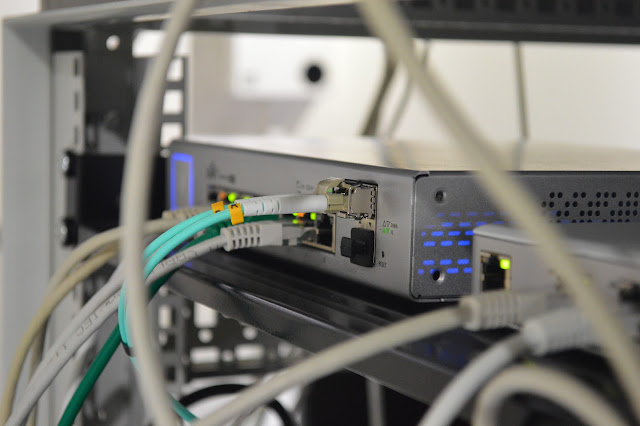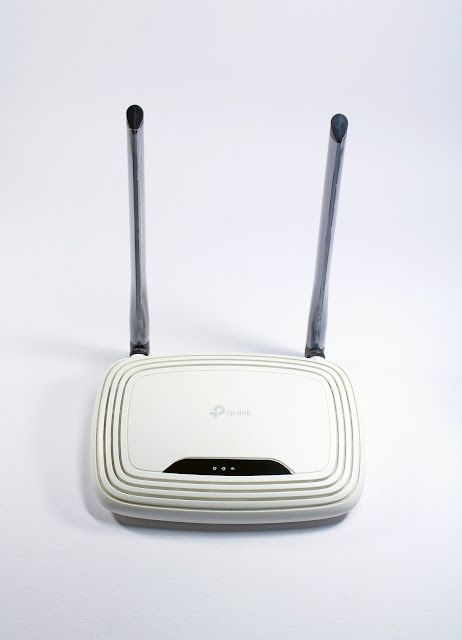The Beginner's FAQ: What Is a Router and How Do I Use One?
You will have a better understanding of what a router is, how to set one up correctly, and how to use one to its best potential after reading this FAQ.
When was the last time you dealt with the technology that enables your internet connection? One essential component of your home network and internet setup is a router.
We'll define a router for you and provide some introductory router usage advice.
What Is a Router?
The components of a computer network, such as the internet, are called routers. The hub of your home network is the router you use every day.
Between the internet and all online devices, i.e., all devices linked to the router, it serves as an information manager. In general, routers route incoming traffic to its final destination.
As a result, your router serves as the first line of defense against dangerous internet attacks on your home network.
What Performs a Router?
Network traffic is managed by your router. For instance, data packets coding for this website must travel from our server, through numerous internet nodes, and eventually through your router to reach your phone or computer to see this content. Your browser on your device decodes those data packets to show the content you're reading right now.
You need a router to control the incoming network signals since the average home has many connected internet-connected devices. In other words, your router ensures that the data packets containing the website's code aren't transferred to your phone when you wish to see it on a computer. The MAC address of your device is used to do that.
Every device on your home network has a distinct MAC address in addition to a unique (external) IP address that allows your router to accept data packages from servers across the world. Your router keeps a database to record which device requested information from where whenever you attempt to access information online. Your router delivers incoming data packets to the appropriate recipient based on this table.
What Distinguishes Modems from Routers?
Your ISP's (internet service provider) private network signal is converted into a standard network signal via a modem. Theoretically, you have a variety of ISP options, some of which may share the same delivery path. The signals that your modem can read and translate are known.
Depending on how you're connected to the internet, your ISP will provide you a certain type of modem. A cable or fiber optic broadband modem requires different technology than a DSL modem, for instance. The reason for this is that whereas the others each utilize a coaxial cable or fiber optic cable, the first one uses the copper wire of your telephone line.
Both the high frequencies of internet data and the low frequencies that phone and voice data emit must be filtered and read by the DSL modem. Contrarily, since television and internet signals are broadcast on various channels rather than different frequencies, cable modems must distinguish between them. Finally, fiber optics transmit data via light pulses. These signals must be converted into common data packages by the modem.
Do I Require a Router and a Modem?
Even if you require both, you might not require two different devices. Nowadays, a lot of modems are actually wireless gateways with a router built-in. These gadgets typically double as Wi-Fi routers, giving you three uses for a single item.
Does Wi-Fi Require a Router?
Yes. The majority of modern routers are wireless routers. They also build at least one wireless network that you may use to connect to the internet in addition to the LAN ports on their back.
Even more, than one Wi-fi network covering several bands, such as 2.4GHz, 5GHz-Low, and 5GHz-High, could be created by your router. Additionally, you may enable guest networks and smart networks on select routers at these various bandwidths.
Utilizing a Router
A router is often a set-it-and-forget-it piece of equipment. That is until you begin experiencing network problems, at which time the router will become a crucial component of your troubleshooting process.
Setting Up a Router
Routers are frequently plug-and-play devices that don't need any further configuration to work. However, as was already said, your router also serves as a security measure. It is crucial that you manually set up your router as a result.
Setting a wifi password, disabling WPS, and altering your default administrator login information are all highly advised. Additionally, you have to stop remote administration, alter your router's default SSID name and IP address, and utilize a robust wireless encryption standard. Some of these processes will be discussed here, while others have already been addressed in the article to which the link is above.
Accessing a Router
Although it's not always essential, you might need to establish a cable connection between your computer and your router to setup it up. You should have received the necessary Ethernet LAN cable along with your router.
Open your browser and type your router's IP address once you have made this physical connection. 192.168.1.1 is often the default router IP address, however, it might alternatively be 192.168.0.1, 192.168.1.254, or another value. Look for a sticker on the back of your router that has the IP address, username, and password you need to log into your router. As a final option, you can use the instructions below to locate your router's IP address from your desktop.
You may enter the default login information for your router on the login page that appears when you access the correct URL.
How to Modify the Wi-Fi Password on a Router
You should update the Wi-Fi password that came with your router to make it more secure.
Log into your router as previously mentioned to access its admin panel to alter the default password. Your router will determine the precise procedures. Generally, locate the wireless or Wi-Fi settings. Your Wi-Fi password may be referred to by your router as a security key or passphrase.
The use of a safe security protocol and encryption like WPA is highly advised. You could even have access to WPA3 encryption if you have a cutting-edge router. Use it!
Resetting a Router
A reset will return your router's basic settings and login information if you ever forget your router's customized password or screw up the configuration.
Locate the corresponding physical button on your router, then push it for at least 10 seconds to reset it. The reset button may require a pin to be accessed.
You can log in to the router using the default credentials displayed on its back once you've properly reset it. Give it some time to reestablish its internet connection first, though.
All About Your Router
You now understand the fundamentals of a router's operation. You can find comprehensive guidance in our archives if you're unsure about the type of router you require or if you have any other queries regarding your router configuration.







